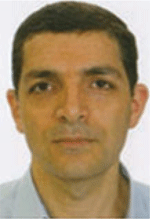Experimental investigation of fluid thermal effects on fracture brittleness
Alireza RezaGholilou A B , Hossien Salemi A , Nathan Tarom A , Pouria Behnoudfar A and Mohammad Sarmadivaleh AA WA School of Mines: Minerals, Energy and Chemical Engineering, Curtin University, Kent St, Bentley, WA 6102, Australia.
B Corresponding author. Email: Reza.Gholilou@Curtin.edu.au
The APPEA Journal 59(1) 457-463 https://doi.org/10.1071/AJ18269
Submitted: 9 December 2018 Accepted: 18 March 2019 Published: 17 June 2019
Abstract
Fracture extent and formation quality are the key parameters affecting hydraulic fracturing results. Fracture brittleness, initiation and propagation are dominantly ruled by in situ stresses and rock mechanical properties which cannot be manipulated. However, operation parameters such as injection rate, viscosity and temperature of fluid can be adjusted for fracturing treatments. This paper focuses on a thermal treatment approach that affects brittleness. We investigated fractures when fluid temperature is lower than formation. Experiments were conducted using synthetic 50-mm cubic samples in a newly built true triaxial stress cell. This cell was fitted with cooling and heating auxiliary apparatus which enabled injection of fluids of various temperatures in the presence of orthogonal stresses. The samples and test records are evaluated in details to develop and upscale the results for real applications such as tight shale gas formations. Findings indicate that brittleness of material increases when considerable temperature differences exist between rock and injection fluid.
Keywords: fluid viscosity, hydraulic fracturing, injection rate, temperature, TTSC and brittleness.

Alireza Rezagholilou is a SPE member and Research Fellow in Curtin University. He has over 15 years of experience in civil, petroleum, mining and offshore engineering. He has significant experience in geotechnical or geomechanical challenges in a broad range of research and industry projects. |

Hossein Salemi is a PhD student at the Department of Petroleum Engineering, Curtin University. His current research focuses on 3D numerical/experimental simulations of sandstone reservoirs considering poroelasticity. He holds a Bachelor Degree of Chemical Engineering from Azad University of Tehran and a Master Degree of Petroleum Engineering from Curtin University |

Nematollah Tarom is a Lecturer in the Department of Petroleum Engineering at Curtin University). He has more than 16 years of field experience in the oil and gas industry. Nematollah has focused on intelligent well completion systems. Prior to his time at Curtin University, Nematollah worked for the National Iranian Oil Co. as a Production Engineer during 1993–1997 and as a Well Completion Engineer during 1997–2009. Nematollah holds a BSc and MSc in Petroleum Engineering from the University of Petroleum Industry (Ahwaz, Iran) and Tehran University (Iran), respectively. |

Pouria Behnoudfar is the PhD Candidate of Applied Geology at Curtin University. He is currently working on the localised large-amplitude deformations of geomaterials in presence of phenomena such as chemical reactions, diffusion and fluid interaction. He has also worked on numerical modelling of dynamic problems, phase-field and geomechanical concepts related to petroleum engineering. |

Mohammad Sarmadivaleh is a Senior Lecturer at the Department of Petroleum Engineering, Curtin University and leads the Petroleum Geo-mechanics Group. He received his PhD from Curtin University in numerical and experimental studies on hydraulic fracturing in 2012. His research interests include hydraulic fracturing, sanding, geomechanical reservoir modelling and CO2 sequestration studies. He currently supervises 20 higher degree by research students and participates in academic and industrial research projects. |
References
Adachi, J., Siebrits, E., Peirce, A., and Desroches, J. (2007). Computer simulation of hydraulic fractures. International Journal of Rock Mechanics and Mining Sciences 44, 739–757.| Computer simulation of hydraulic fractures.Crossref | GoogleScholarGoogle Scholar |
Bai, M. (2016). Why are brittleness and fracability not equivalent in designing hydraulic fracturing in tight shale gas reservoirs. Petroleum 2, 1–19.
| Why are brittleness and fracability not equivalent in designing hydraulic fracturing in tight shale gas reservoirs.Crossref | GoogleScholarGoogle Scholar |
Behnoudfar, P., Asadi, M. B., Gholilou, A., and Zendehboudi, S. (2019). A new model to conduct hydraulic fracture design in coal bed methane reservoirs by incorporating stress variations. Journal of Petroleum Science Engineering 174, 1208–1222.
| A new model to conduct hydraulic fracture design in coal bed methane reservoirs by incorporating stress variations.Crossref | GoogleScholarGoogle Scholar |
Biot, M. A., Masse, L., and Medlin, W. (1987). Temperature analysis in hydraulic fracturing. Journal of Petroleum Technology 39, 1389–1397.
| Temperature analysis in hydraulic fracturing.Crossref | GoogleScholarGoogle Scholar |
Bunger, A. (2005). Near-surface hydraulic fracture. PhD Dissertation. University of Minnesota, Minneapolis.
Detournay, E. (2004). Propagation regimes of fluid-driven fractures in impermeable rocks. International Journal of Geomechanics 4, 35–45.
| Propagation regimes of fluid-driven fractures in impermeable rocks.Crossref | GoogleScholarGoogle Scholar |
Feng, R., Wang, H., Abdolghafurian, M., Tarom, N., Hossein, S., Ezdini, A., and Rezagholilou, A. (2018a). Optimized approach to conduct hydraulic fracturing test on true tri-axial stress condition. In ‘52nd US Rock Mechanics/Geomechanics Symposium’. (American Rock Mechanics Association)
Feng, R., Zhou, G., Sarmadivaleh, M., Rezagholilou, A., and Roshan, H. (2018b). The role of ductility in hydraulic fracturing: an experimental study. In ‘52nd US Rock Mechanics/Geomechanics Symposium’. (American Rock Mechanics Association)
Gholilou, A., Behnoudfar, P., Vialle, S., and Madadi, M. (2017). Determination of safe mud window considering time-dependent variations of temperature and pore pressure: Analytical and numerical approaches. Journal of Rock Mechanics and Geotechnical Engineering 9, 900–911.
| Determination of safe mud window considering time-dependent variations of temperature and pore pressure: Analytical and numerical approaches.Crossref | GoogleScholarGoogle Scholar |
Holt, R., Fjaer, E., Nes, O., and Alassi, H. (2011). A shaly look at brittleness. In ‘45th US Rock Mechanics/Geomechanics Symposium’. (American Rock Mechanics Association)
Kresse, O., Weng, X., and Cohen, C.-E. (2013). Influence of fracturing fluid and reservoir temperature on production for complex hydraulic fracture network in shale gas reservoir. (Society of Petroleum Engineers)
Rickman, R., Mullen, M. J., Petre, J. E., Grieser, W. V., and Kundert, D. (2008). A practical use of shale petrophysics for stimulation design optimization: All shale plays are not clones of the Barnett Shale. In ‘SPE Annual Technical Conference and Exhibition’. (Society of Petroleum Engineers)
Sarmadivaleh, M., and Rasouli, V. (2015). Test design and sample preparation procedure for experimental investigation of hydraulic fracturing interaction modes. Rock Mechanics and Rock Engineering 48, 93–105.
| Test design and sample preparation procedure for experimental investigation of hydraulic fracturing interaction modes.Crossref | GoogleScholarGoogle Scholar |
Seth, G., Reynolds, A. C., and Mahadevan, J. (2010). Numerical model for interpretation of distributed-temperature-sensor data during hydraulic fracturing. In ‘SPE Annual Technical Conference and Exhibition’. (Society of Petroleum Engineers)


